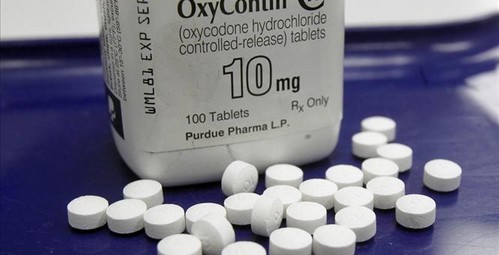Opioid Deaths: Another Drug War Failure
Illicit drug use is an old phenomenon, and Jeff Sessions has an old solution: take off the gloves. “We have too much of a tolerance for drug use,” the attorney general complained to an audience of law enforcement officials Wednesday, promising more aggressive policing. “Our nation needs to say clearly once again that using drugs is bad,” he declared. “It will destroy your life.”
That claim will fall on a lot of deaf ears among the 100 million Americans who have used marijuana — most of whom found it did not destroy their lives and some of whom found it made their lives better.
He is right, though, that tolerance is rampant. A Gallup Poll last year showed that 60 percent of Americans think pot should be legalized for recreational use — as eight states and the District of Columbia have done. Medical marijuana is allowed in 28 states and D.C. But in his prepared remarks, Sessions insisted cannabis is “only slightly less awful” than heroin.
Oh, please. The nation is in the midst of an epidemic of overdose deaths involving heroin and other opioids. In 2015, 32,000 Americans died of such overdoses. Compare that with the number of people who died from ingesting an excess of marijuana: zero.
Pot, in fact, appears to be saving lives. A 2014 study published in JAMA Internal Medicine found that states allowing medical marijuana had 25 percent fewer deaths from prescription drug overdoses than states forbidding it.
People often use opioids to relieve pain. But “individuals with chronic pain and their medical providers may be opting to treat pain entirely or in part with medical marijuana, in states where this is legal,” said Johns Hopkins University professor Colleen Barry, the lead author. Sessions made a point of commenting on this unwelcome scientific data: “Give me a break.”
He paid lip service to “treatment and prevention,” but don’t expect much there. The Affordable Care Act, which the Trump administration and congressional Republicans have vowed to repeal, has been “the largest expansion of drug treatment in U.S. history,” according to Stanford University psychiatry professor Keith Humphreys. If they have their way, we can expect the largest contraction of drug treatment in U.S. history.
Promoting treatment goes against the approach long preferred by hard-line politicians. The most effective remedy for opioid addiction is medication-assisted treatment, or MAT, with drugs like methadone and buprenorphine. But if you’d like to stop shooting heroin, you may search in vain for help.
The Drug Policy Alliance reports that “access to MAT is severely limited by extensive federal and state regulations and restrictions. A scant 12 percent of individuals with opioid dependence receive methadone, and only nine percent of substance abuse treatment facilities in the United States offer specialized treatment of opioid dependence with MAT.”

Among the people who could most benefit from this sort of treatment are prison inmates. But a DPA survey found no state correctional systems that provide it — even though a report last year from the surgeon general compared it to giving insulin to diabetics. Upon release, opioid-prone offenders are particularly susceptible to dying of an overdose, apparently because addicts’ physical tolerance diminishes while they are locked up.
Zealous drug warriors bridle at anything except prohibition and abstinence. Closing down “pill mills,” where physicians allegedly overprescribe opioids, is a favorite option. Such lifesaving measures as facilitating access to sterile syringes and naloxone, which is used to reverse overdoses before they kill, are inherently suspect.
The criminalization of opioid use often has fatal consequences, because it leaves addicts to obtain supplies from street dealers rather than pharmacists. The drugs they get may be surreptitiously laced with fentanyl or other synthetic opioids that are cheaper than prescription meds but much more potent — raising the overdose risk.
Crackdowns have other unhealthy side effects. “When the police shut down a local pill mill, they rarely identify the users and help them get treatment, and heroin and fentanyl dealers are quick to move in to exploit the new business opportunity,” writes New York University professor Mark A.R. Kleiman in the March/April issue of Foreign Affairs. “In 2014, deaths from overdosing on prescription opioids fell, but deaths from fentanyl overdoses almost doubled.”
It’s often said that drugs are a crutch for those who can’t cope with reality. Give Sessions credit: He needs no artificial substances to disregard truth.





